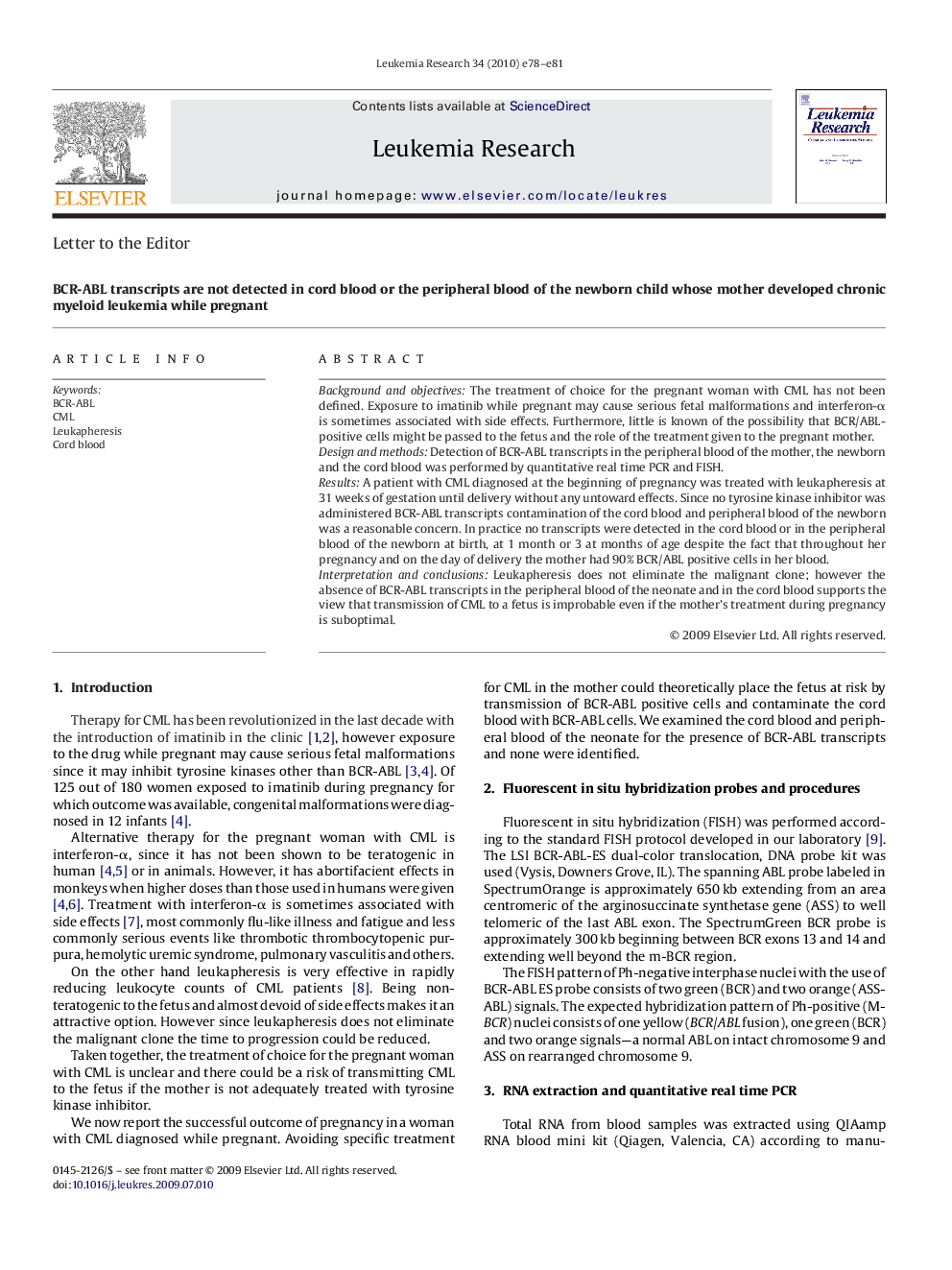| Article ID | Journal | Published Year | Pages | File Type |
|---|---|---|---|---|
| 2137716 | Leukemia Research | 2010 | 4 Pages |
Background and objectivesThe treatment of choice for the pregnant woman with CML has not been defined. Exposure to imatinib while pregnant may cause serious fetal malformations and interferon-α is sometimes associated with side effects. Furthermore, little is known of the possibility that BCR/ABL-positive cells might be passed to the fetus and the role of the treatment given to the pregnant mother.Design and methodsDetection of BCR-ABL transcripts in the peripheral blood of the mother, the newborn and the cord blood was performed by quantitative real time PCR and FISH.ResultsA patient with CML diagnosed at the beginning of pregnancy was treated with leukapheresis at 31 weeks of gestation until delivery without any untoward effects. Since no tyrosine kinase inhibitor was administered BCR-ABL transcripts contamination of the cord blood and peripheral blood of the newborn was a reasonable concern. In practice no transcripts were detected in the cord blood or in the peripheral blood of the newborn at birth, at 1 month or 3 at months of age despite the fact that throughout her pregnancy and on the day of delivery the mother had 90% BCR/ABL positive cells in her blood.Interpretation and conclusionsLeukapheresis does not eliminate the malignant clone; however the absence of BCR-ABL transcripts in the peripheral blood of the neonate and in the cord blood supports the view that transmission of CML to a fetus is improbable even if the mother's treatment during pregnancy is suboptimal.
